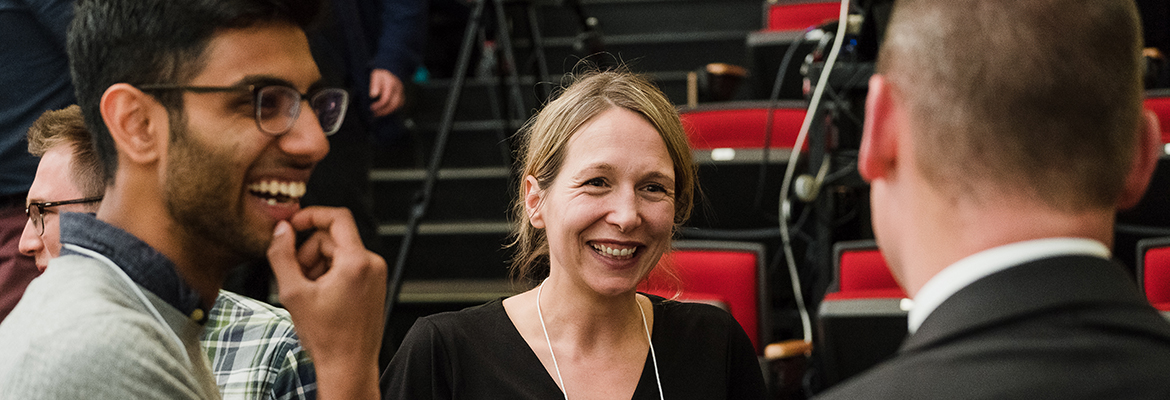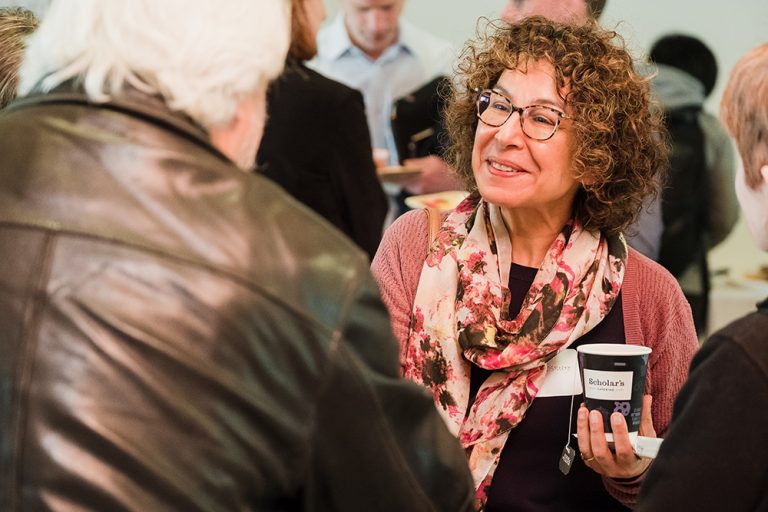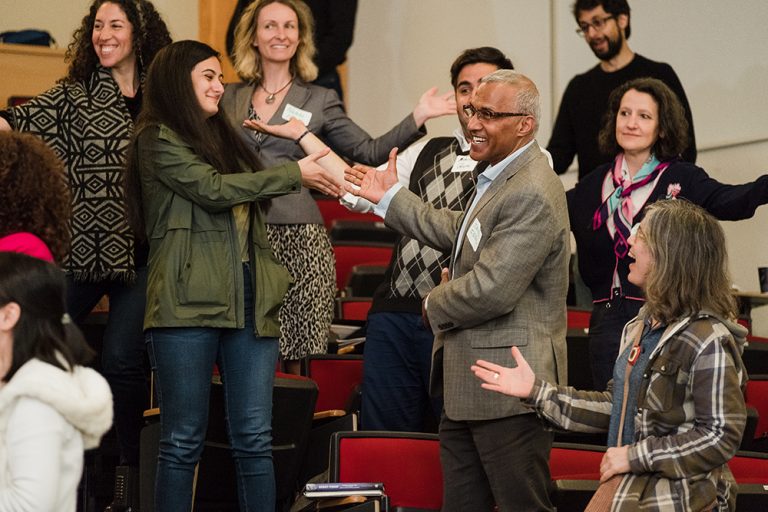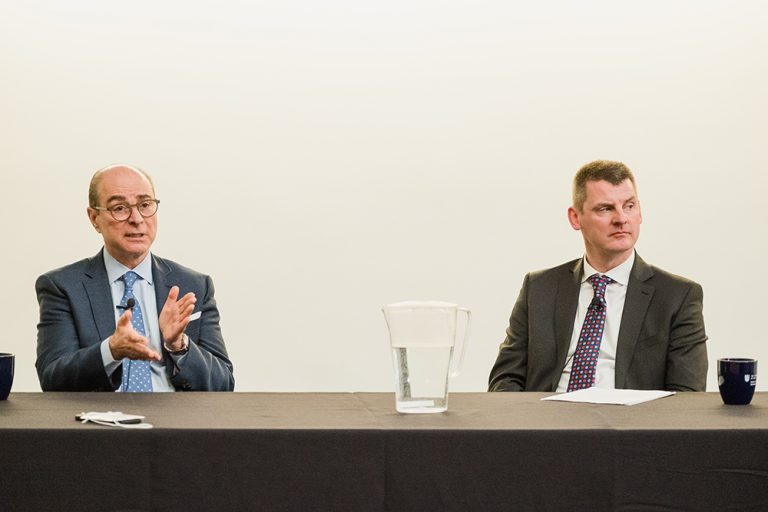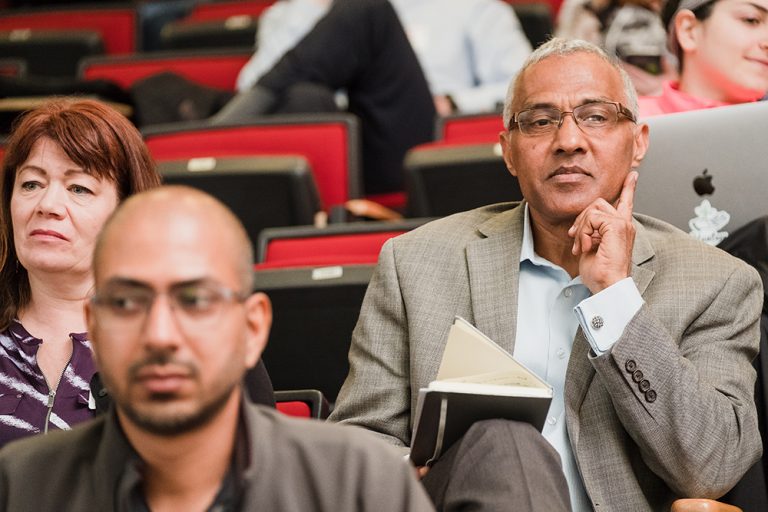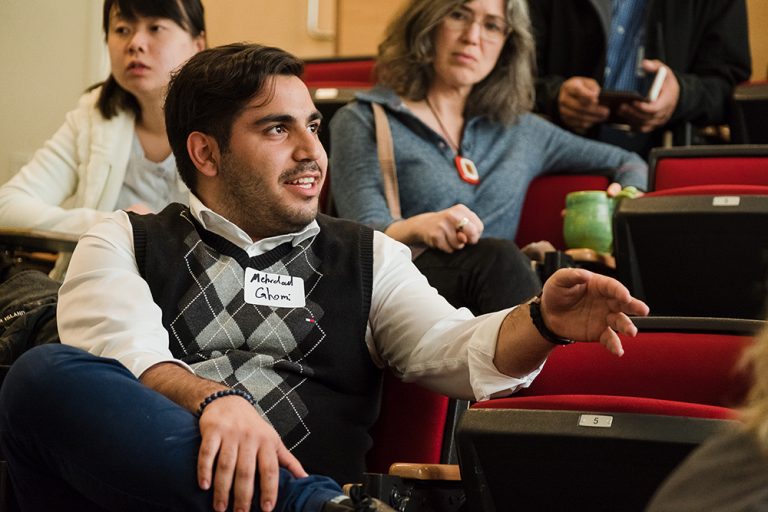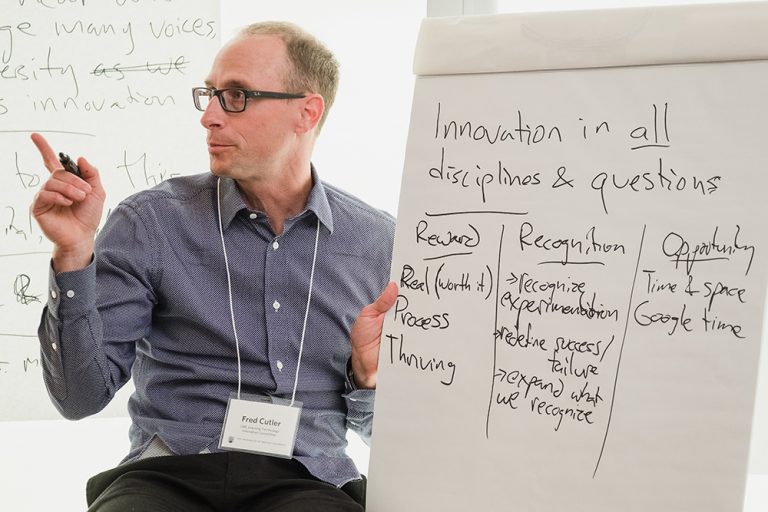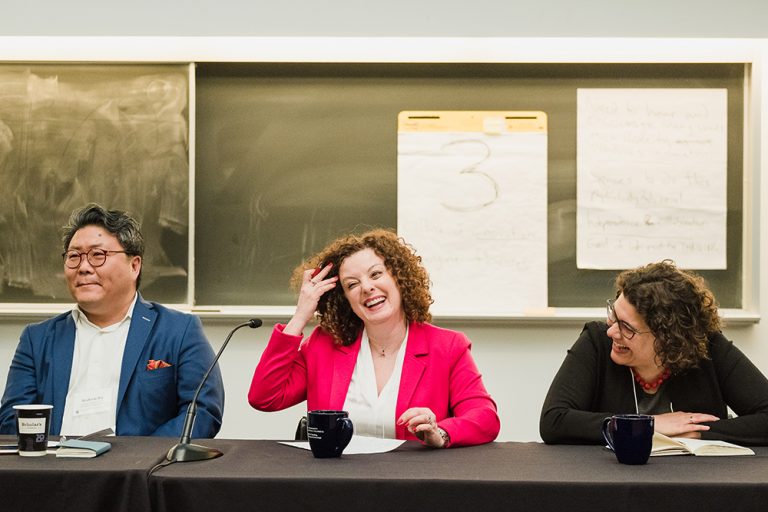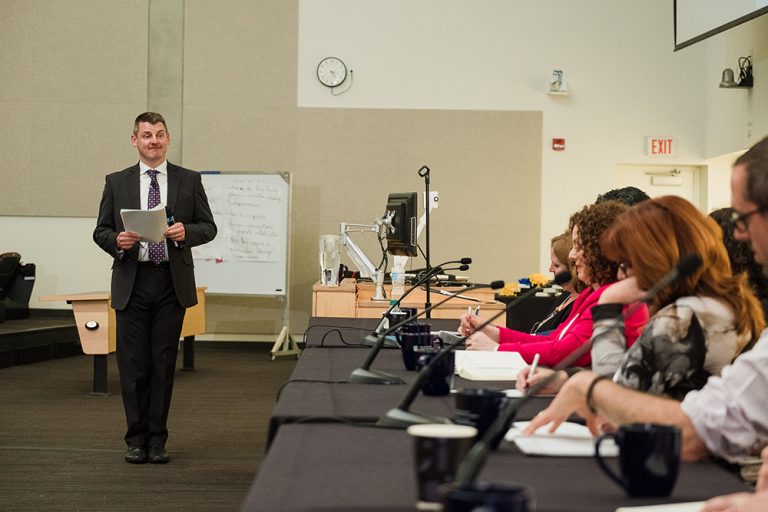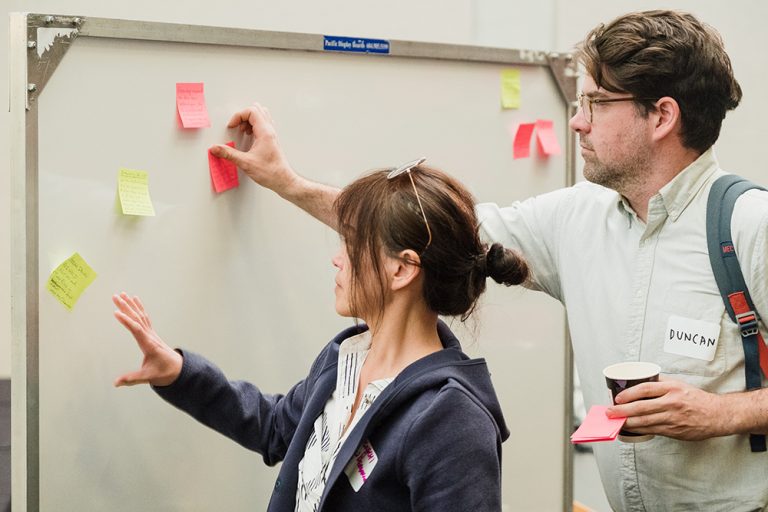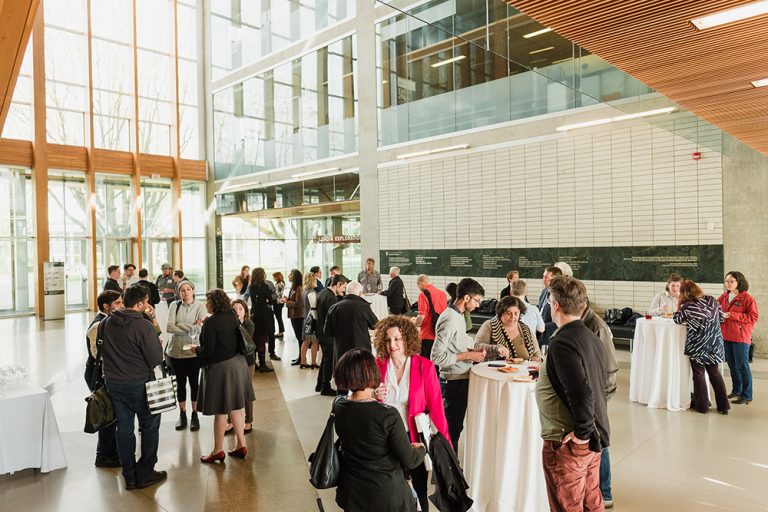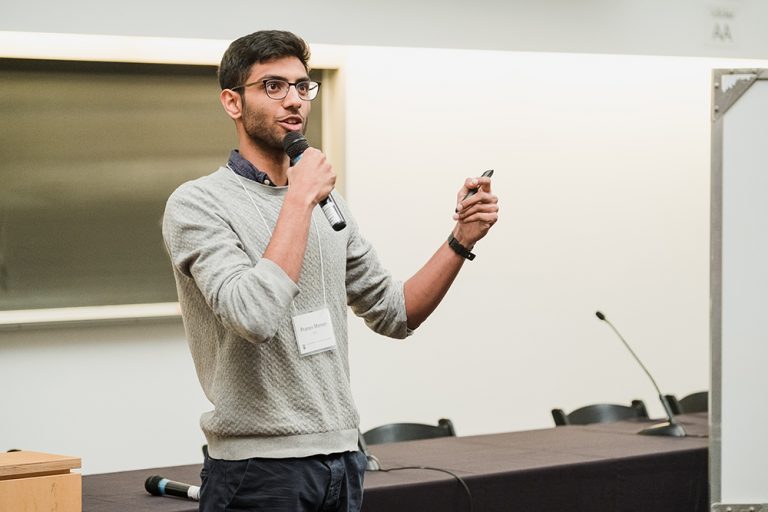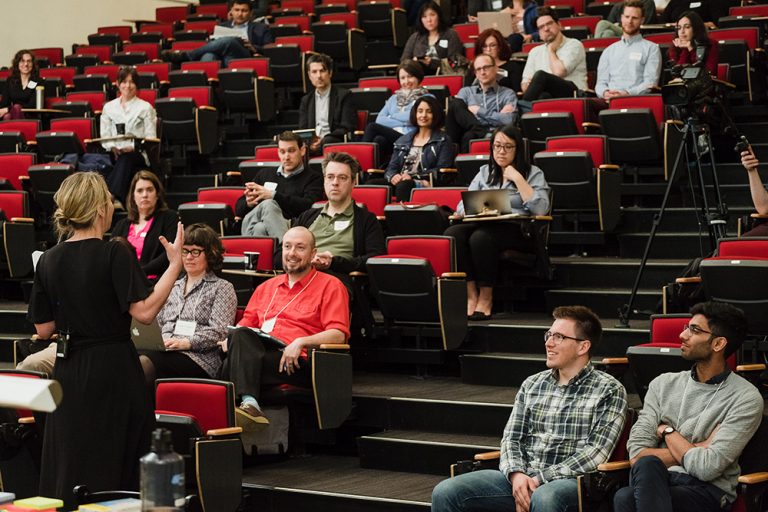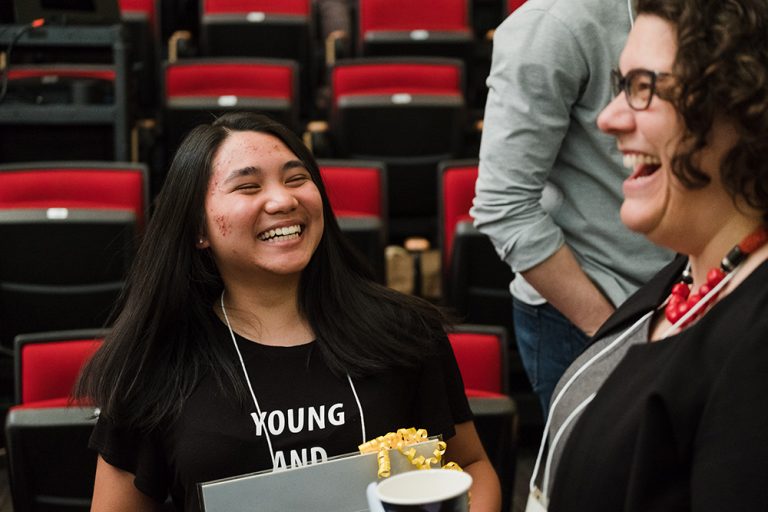UBC’s 10th annual Celebrate Learning Week kicked off Monday, April 30 with UBC’s inaugural Learning Technology Innovation Summit. Hosted by the UBC Learning Technology Innovation Committee, the Summit brought together academic and industry leaders, faculty and students to reflect on innovation, transformative learning and the university’s approach to delivering education and preparing students for the future.
Dr. Joseph E. Aoun on how to ‘robot-proof’ students
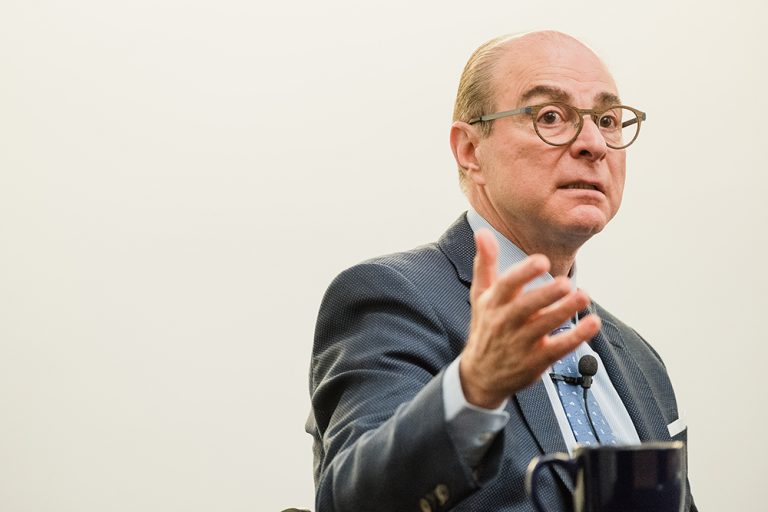
Joseph E. Aoun, president of Northeastern University in Boston, and author of Robot-Proof: Higher Education in the Age of Artificial Intelligence, opened the Summit by addressing this question in a keynote speech about education in an age of technological disruption.
As artificial intelligence continues to get smarter and to displace more jobs, how should we envision the future of the university? Joseph E. Aoun, president of Northeastern University and author of Robot-Proof: Higher Education in the Age of Artificial Intelligence, opened the Summit by addressing this question in a keynote speech about education in an age of technological disruption.
Aoun’s roadmap for higher education is based on what he calls “humanics,” the integration of technological literacy, data literacy, and human literacy — the latter being the uniquely human skills like creativity, empathy, and entrepreneurship that can’t be duplicated by machines.
Experiential learning opportunities, such as internships, are a crucial component of his approach: “Experiential education is what allows the learner to practice the integration of the three literacies on a daily basis,” Aoun said.
Aoun also proposed that the university has a role to play in upskilling individuals who already have professional experience.
“The only way for us to survive and to flourish in this environment is to have the opportunity to educate ourselves,” Aoun said. “Becoming robot-proof is a journey. No one is set for life. That’s the opportunity and the obligation for higher education.”
Student perspectives on the future of learning
Four UBC students — Stuart Clarke, Nichole Goh, Kari Marken and Pranav Menon — shared their vision for the future of the university at the Summit, exploring barriers to innovation and approaches to incorporating technologies like augmented and virtual reality in teaching practices.
Presenter Kari Marken, a Ph.D. candidate from the UBC Department of Curriculum & Pedagogy, advised that the university has been overlooking the role of students in planning for the future.
“Our youngest members of the academy can contribute to conversations about disruption and innovation,” Marken said. “We just need to write them into the script.”
For Menon, the entrepreneurial mindset is key to creating a better learning experience for students — this means increased emphasis on out-of-class learning opportunities like Hackathons and placing more importance on design thinking, which gives students the freedom to takes risks and learn from setbacks.
“Design thinking flips the idea of failure. It takes failure as feedback,” Menon said.
Enabling the future of teaching and learning at UBC
The afternoon’s panel discussion focused on the steps UBC needs to take to enable the future of teaching and learning. Panel guests included industry leaders, as well as members of the academic community:
- Jennifer Burns, Chief Information Officer, UBC
- Lia De Cicco-Remu, National Director, Education Strategy & Teacher Engagement, Microsoft Canada
- Andrew Ko, Managing Director for Global Education, Amazon Web Services Worldwide Public Sector
- Dr. Claudia Krebs, Professor of Teaching, Department of Cellular and Physiological Sciences, UBC Faculty of Medicine
- Dr. Patricia Lasserre, Associate Provost Enrolment & Academic Programs, UBC Okanagan
- Dr. Arthur G. Green, Affiliate Assistant Professor, Department of Geography, UBC Faculty of Arts
- Dr. Chris Mallett, Chief Operating Officer, Lifelong Learning Network, Northeastern University
- Pranav Menon, UBC Integrated Engineering student
Panelists explored numerous questions facing universities worldwide. For example, how can we encourage students and professors to embrace new tech? How do we move beyond a model that encourages students to simply store information and then regurgitate it for tests?
In terms of adopting new technologies, Chris Mallett, the chief operating officer of the Lifelong Learning Network at Northeastern University, suggested universities look to individuals who want to embrace new innovative ideas or technologies, rather than trying to force them.
“At Northeastern, we’re rarely successful when we try to persuade a group of people to do something new and innovative that they don’t really have the passion for,” Mallet said. “We’re often successful when we seed innovation and we invite people to embrace it.”
UBC Professor Dr. Claudia Krebs is a keen advocate for technology in teaching, having collaborated with engineers, undergraduate interns, and Faculty of Medicine graduate students to develop an interactive augmented reality app for the HoloLens that she uses to teach neuroanatomy. Her advice to instructors is to take a step back to think about whether a high-tech tool is the most suitable for the job.
“Technology at its best shouldn’t be noticeable to the students,” she said. “Sometimes the best piece of technology I bring to the classroom is my set of chalk pastels.”
Microsoft Canada’s Lia De Cicco-Remu agrees.
“Just because you have lots of cool stuff doesn’t mean that learning is going to happen. Always come back and think, why am I using this tool? Sure, it’s cool, but is it ultimately going to impact the outcome of what I’m trying to do?”
Finding ways to take teaching and learning beyond an emphasis on facts and memorization tied into themes from throughout the day. Patricia Lasserre, Associate Provost of enrollment and academic programs at UBC Okanagan, says using a flipped classroom model has worked extremely well in her computer science courses.
“I completely switched my teaching. I gave students resources before they came to class, and we’d spend time in class doing activities,” Lasserre said.
Incorporating more experiential learning has also benefited Lasserre’s students, deepening their understanding of the user experience.
“We went in the community and we redesigned websites for non-profit organizations,” she said. “They went through a usability study and all the processes that go on in industry to make software successful.”
Throughout the day, conversations at the Innovation Summit returned to a need for more opportunities for the UBC community to collaboratively reflect on ways the university model may need to change and on what innovation in education should look like. According to Aoun, this is an exciting time for universities like UBC.
“This can be viewed as the golden age of higher education. We’re the ones that can make it happen.”
Photography by Geoff Lister
